Liverpool Counts Quality Mark
1 The first stage of learning about numbers is learning number names. This usually happens around 2½ years, when children start to repeat the names of numbers they hear. Although they don’t connect names with quantity or understand they come in a fixed order yet.
How to help: Sing songs including numbers e.g. 1, 2, 3, 4, 5 once I caught a fish alive, 5 little ducks, There were 10 in the bed. Read books that involve numbers and point out numbers in the environment.
| 2 |
The next stage for children is to learn that numbers have a fixed, unbreakable order i.e. 1, 2, 3, 4, 5, 6, 7, 8, 9, 10, 11 they have to count all the way to the 20’s to see the repeating pattern. Not only do they have to learn the number names, they then have to master the sequence to get them right.
How to help: Count things out in front of your child ‘let’s put one, two, three pieces of apple in your bowl’ count steps going up stairs, count the number of trees in the park.
| 3 |
From around 3 ½ years children start to learn about counting a group of objects by matching a number name to each one. Children usually do this by physically touching or pointing at each object. It is common for them to make mistakes such as missing a number out or saying a number twice. Later they’ll learn they can count things they can’t physically touch or point to such as the days of the week or rooms in their house.
How to help: Practice counting objects like buttons or toys to encourage your child to point to objects as they say the number name. Try matching activities like counting out cutlery when laying the table e.g one fork for mummy, one for daddy, one for you…
| 4 |
When a child starts to learn to count in sequence, they don’t realise that the last number they say is how many there are in that group. They need to learn that if they count to 10 then there are ten in that group. They also need to learn that it does not matter in what order they count the group be in left to right, bottom to top or randomly the number stays the same.
How to help: Give your child objects to count such as plastic dinosaurs, beads to thread on a string, Lego, pasta or even smarties. Encourage them to match numbers e.g. draw a picture of a ladybird with three spots on one side, ask your child to draw the same number on the other side.
| 5 |
At around 5 years your child can usually look at a small group of objects (about 3-5), randomly arranged and tell how many are there without counting them. Adults can do this with a maximum of 4 to 5 objects.
How to help: Encourage children to estimate how many objects are in a group, for example with dice patterns, dominoes or sweets in a jar.
| 6 |
Help children understand that numbers can stand for different things i.e. ‘I am five’, ‘we caught 5 fish’, we get the number 5 to town’. This is one of the trickiest parts of learning to count, for example there is nothing about the digit 5 that physically represents the number 5 so children visualise different ways to learn the number such as picturing 5 dots on a domino or 5 fingers on their hand.
How to help: Talk to children about different uses of numbers use your environment to help e.g. ‘Look, there are 4 ducks in the pond’ or ‘Can you see the number 4 on that door?’ Play board games with dice. (Children who play board games with their family have a better understanding of number before school age).
| 7 |
By the end of Reception most children will have mastered all of the above and will be starting to learn about counting backwards or starting from a number other than 1. They will also be learning new language such as more than, fewer than, higher than and lower than.
How to help: Take advantage of everyday opportunities to use the language of maths. We have four apples left, are there enough for everyone in the family?’ ‘Look, there are more ducks in the pond today than we saw yesterday’
